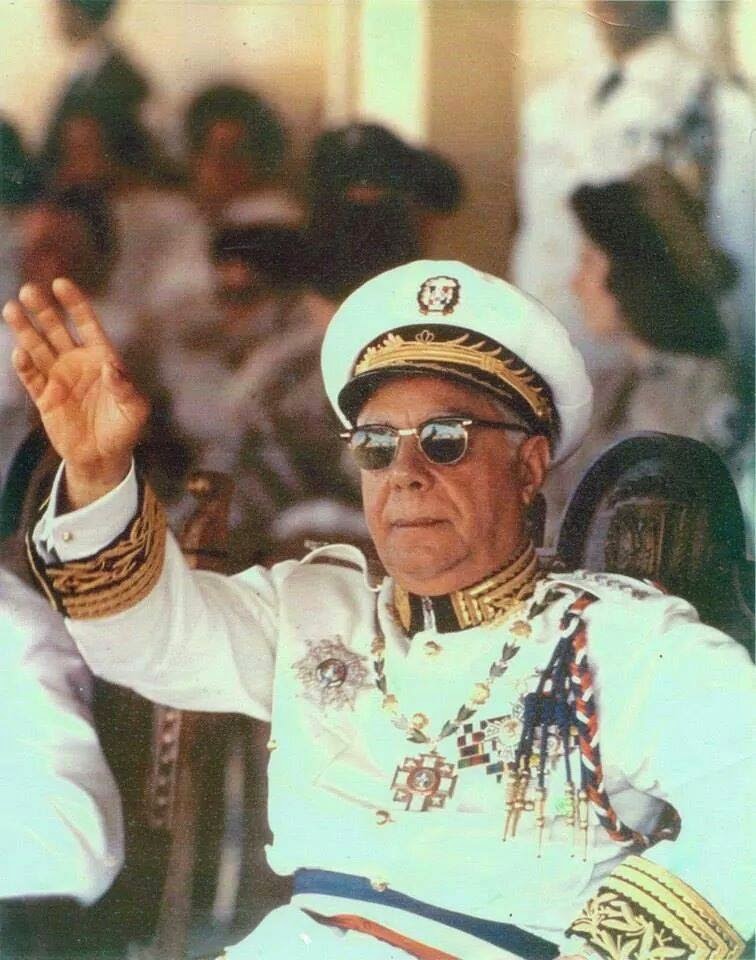Rafael Trujillo ruled the Dominican Republic from 1930 until his assassination in 1961. His 30 years in power, to Dominicans known as the Trujillo Era, is considered one of the bloodiest ever in the Americas, as well as a time of a classic personality cult, when monuments to Trujillo were in abundance. It has been estimated that Trujillo’s rule was responsible for the death of more than 50,000 people. At the suggestion of Mario Fermín Cabral, Congress voted overwhelmingly in 1936 to rename the capital from Santo Domingo to Ciudad Trujillo. The province of San Cristobal was created as “Trujillo,” and the nation’s highest peak, Pico Duarte, was renamed in his honor. Statues of “El Jefe” were mass-produced and erected across the Republic, and bridges and public buildings were named in his honor. The nation’s newspapers now had praise for Trujillo as part of the front page, and license plates included the slogan “Viva Trujillo!” An electric sign was erected in Ciudad Trujillo so that “Dios y Trujillo” could be seen at night as well as in the day. Eventually, even churches were required to post the slogan, “Dios en cielo, Trujillo en tierra” (God in Heaven, Trujillo on Earth). Trujillo was recommended for the Nobel Peace Prize by his admirers, but the committee declined the suggestion. When he received (or summoned) a visitor, his four bodyguards would have submachine guns trained upon the “guest” during the meeting.
Rafael Trujillo
